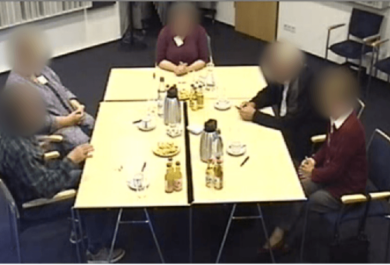
Video analysis: A new method is born – Part 1
Measuring hearing aid performance used to come with compromise – either precise results that cannot be applied to everyday life, or vice versa. Until now…
I have been evaluating hearing aids for more than 20 years now, both in the hospital setting and more recently in collaboration with various institutions around the world. There are several standard methods that are commonly used. One such method involves purely technical measurements, in which the sound signal is either recorded and analyzed very generally in the test box, using KEMAR (a head and torso simulator), or individually on the hearing aid wearer’s eardrum.
Although these technical measurements are very precise and reliable, they offer only a limited assessment of how satisfied hearing aid wearers are with their hearing instruments. For this reason, various perceptive measurement methods are often used in order to obtain a subjective evaluation of a user’s perception of sound quality while wearing hearing aids, for example through questionnaires. Additionally, speech tests are particularly important as they demonstrate how well a hearing aid wearer performs—especially in noisy environments—while also taking into account his or her cognitive abilities.
Perceptive measurements are not as precise as technical measurements, as the results depend on the personal experiences and expectations of the hearing aid wearer. Despite this, the results of perceptive measurement methods give a very clear picture of the general satisfaction level, which is of course a key factor in whether someone will purchase hearing aids and also use them regularly.
Laboratory versus everyday life environments
Perceptive measurements are certainly reliable when collected in the laboratory under clearly defined conditions. However, although these conditions are designed to replicate the hearing aid wearer’s everyday life, they can only do so to a certain extent. For this reason, ecological validity is reduced.
In contrast, when hearing aid wearers are asked questions in everyday life environments (e.g., via a questionnaire) the results are relevant but less often reliable because they are highly dependent on their personal experiences. For this reason, hearing aids that score highly in the laboratory often get a much more negative rating when used in everyday life situations.
And this leads to the contradiction: High precision and conditional relation to everyday life vs. conditional precision and direct relation to everyday life.

The solution: Bring everyday life into the laboratory
In order to break this vicious circle, we teamed up with Hörzentrum Oldenburg, an internationally recognized hearing research center in Germany to bring everyday life into the laboratory. We started this process by identifying a typical communication situation that often occurs in everyday life: going to a café. We wanted to ensure that hearing aid wearers were not given a passive role, e.g., listening to a loudspeaker, and instead enabled them to actively participate in the conversation.
We invited several hearing aid wearers to simulate a café situation in which they could discuss topics of common interest, while their hearing instruments and settings were periodically adjusted. This environment helped participants quickly ‘forget’ that they were in a test situation.
And with this approach, we created a new method for evaluating hearing aids, in a laboratory…and under real-life conditions!

But what has all this got to do with the title of this article—with video analysis?
Well, this is in fact the key feature of this new method: The advantage of using video analysis is that it provides a communication situation in which hearing aid wearers can behave normally. If, as in previous methods, participants were required to act as their own ‘measuring tools’ by each evaluating their own perceptions of hearing aid performance, the results would still be reliant on subjective responses and would be no more accurate than before.
How did we decide on video analysis?
We wanted to find a different method that would allow us to exclude influential factors as much as possible. This led us to the “Ground Theory Approach,” a relatively old social science method from 1967 for observing behavioral changes. The key point of this well-validated method is that the behavior of the test subjects is analyzed by external observers.
In our case, this means that if changes are observed in the unconscious behavior of the hearing aid wearers, such changes are shown to be the result of adjustments to the hearing aids or settings. This is an objective measurement, as the specially trained external observers who analyze the videos provide neutral descriptions of these behavioral changes. Furthermore, the external observers are blinded according to the test conditions.
With video analysis, the scenario is not observed live, but instead is recorded using various cameras and microphones so the recordings can be analyzed at a later date. This ensures that even minor behavioral changes can be identified and classified more precisely. These recordings can also then be evaluated by more than one observer to exclude subjective influential factors to the greatest extent possible.
By this new method, we have gained wonderful insights into the performance of our hearing aids. I invite you to learn more about our findings using this new method in part 2 of this series…Stay tuned!
